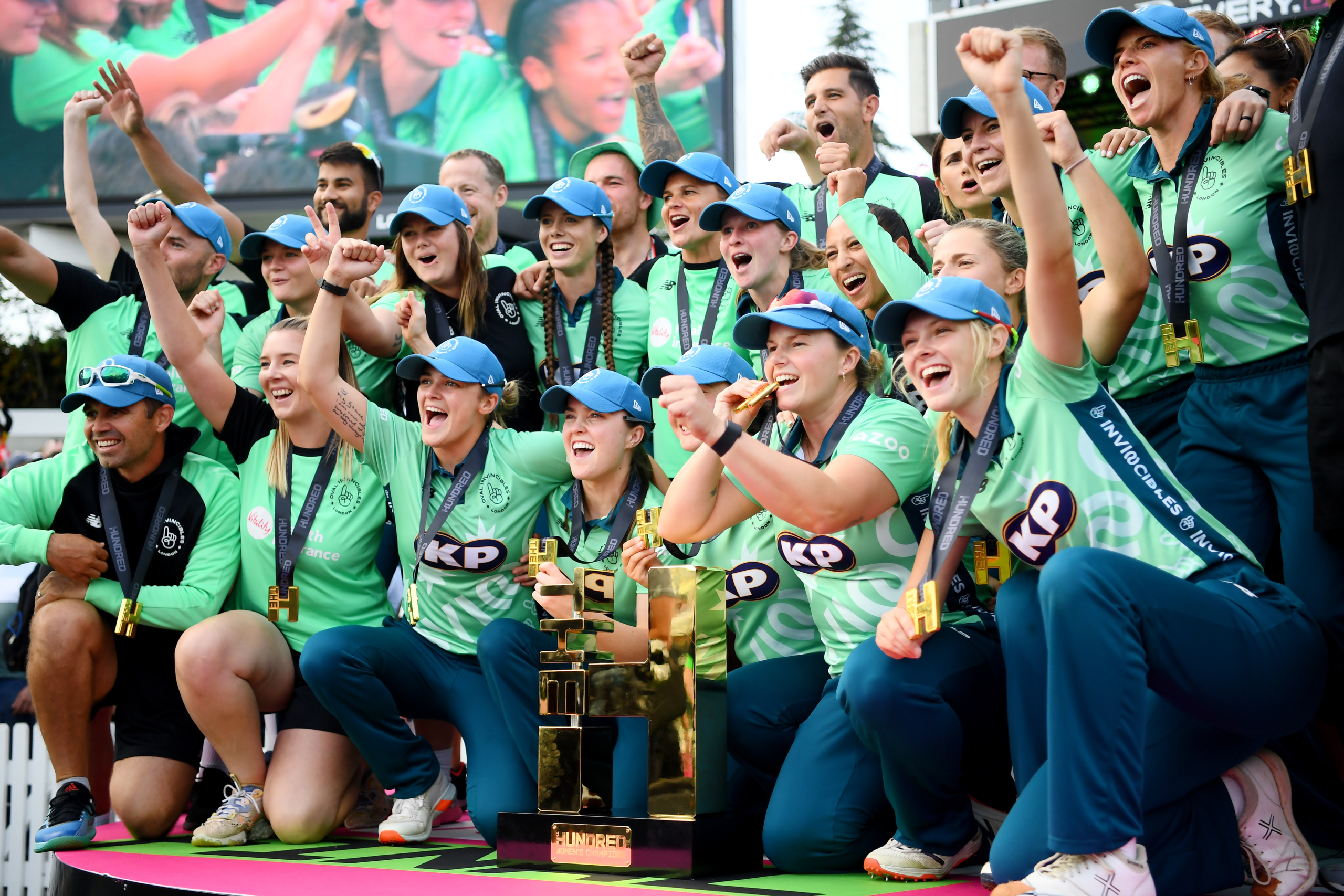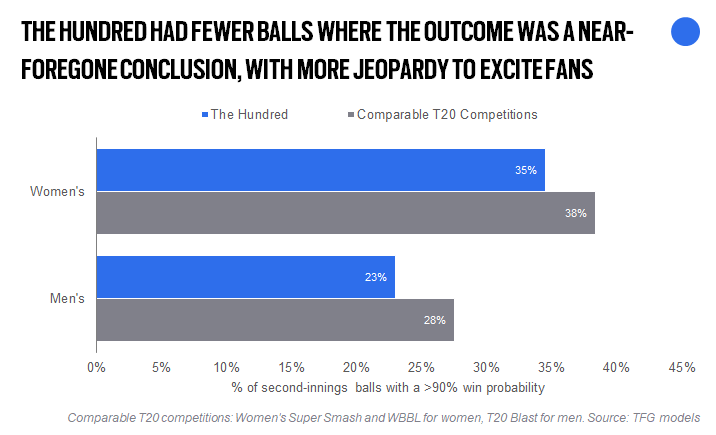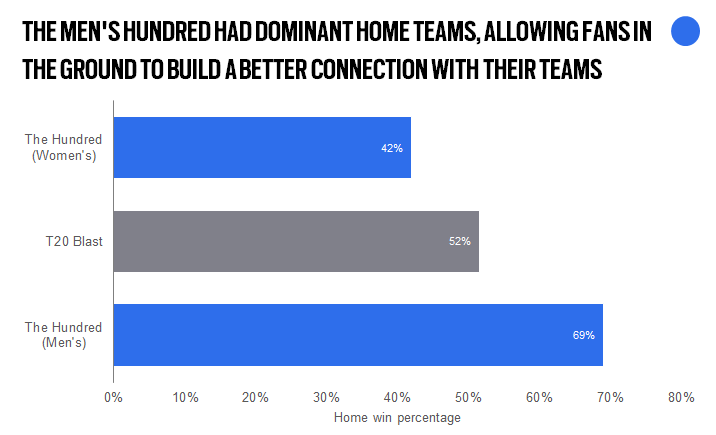Thought Leadership
The Hundred: a story of sporting success
9 MIN READ
Thought Leadership
Inspired by what you’re reading? Why not subscribe for regular insights delivered straight to your inbox.
In the world of competition structure, perhaps the biggest success story of the year was The Hundred, English cricket’s attempt at enlivening its domestic product. It ultimately delivered on all the key elements that are required to deliver compelling sport: high-quality action with elite players, jeopardy with no outcome guaranteed, and connection that meant fans cared about the results.
Cricket has historically been a sport for the traditionalists. The game’s existing audience was secured when there were fewer forms of entertainment competing for their attention, meaning cricket’s traditionally sedate pace was advantageous. No longer.
The need for change arose from the desire (or necessity) to better serve a new, younger and more diverse audience who have found traditional forms of cricket increasingly unappealing. Post-mortems of The Hundred have generally been kind – rightfully – but have tended to focus on the razzmatazz of the marketing rather than the cricket itself.
At Twenty First Group we recognise the need to effectively market competitions, but believe that success over the long term is ultimately dependent on the quality of the sporting product. In short, regardless of your commercial capabilities, the cricket itself still needs to be captivating. We assess sporting products against their ability to deliver high quality sport, moments of jeopardy and a connection to as wide an audience as possible. And while valid questions remain around The Hundred’s role and impact in the wider ecosystem of English cricket, when assessed on its ability to deliver quality, jeopardy and connection to fans, it’s clear from our analysis that The Hundred delivered.
Quality
Relative to other relevant benchmarks, The Hundred was a higher quality competition. According to our models, the quality of the men’s batters and bowlers put the competition slightly behind the Indian Premier League and well clear of Australia’s Big Bash. Much of this was due to there being fewer teams than, say, the existing T20 Blast and therefore a greater concentration of the best available talent. Bearing in mind there were a large number of notable international absentees, we’d expect future editions to produce even higher quality cricket. This produced entertainment too, with fewer balls per boundary in the men’s edition and fewer balls per wicket across both the men’s and women’s competition. High quality, action packed cricket.
Jeopardy
Quality alone is not enough – games need to keep fans on the edge of their seats and again The Hundred delivered. Games across The Hundred were more unpredictable than equivalent competitions. The draft system and shorter format combined to create competitive balance across both competitions producing closer matches. Matches across the Hundred went closer to the wire, meaning fans attending the match or watching on TV had a greater chance of seeing a nail-biter – there was both a lower proportion of balls bowled with the outcome effectively decided and a lower proportion of balls ‘unbowled’ across both competitions. The Hundred was both exciting and high quality.
Connection
The competition was as relevant as the cricket was impressive, meaning the Hundred also delivered around ‘connection’. A large number of young, diverse people have a natural affinity with the locations that were home to the city-based franchises. Placing the men’s and women’s competitions on an equal footing, utilising double-headers, and scheduling games at times convenient for families to attend live helped to cross-pollinate fans of either competition into being fans of both. And enlisting the participation of some of the world’s most box-office players (even with the many absentees) on top of the best English players helped turn fans of individual players into fans of the competition. Utilising the reach of the BBC helped the competition connect with a wider audience – something that will bear fruit in rights values in future years, should these new fans be retained. Broadcasting matches every night also helped narratives develop, with fans able to follow all of the the performances of an emerging talent like Jake Lintott enabling them to develop stronger connection. This was reflected in the numbers – the 16.1m viewers that tuned in to the competition was more than watched the 2019 men’s World Cup according to the ECB. Likewise, the viewing figures for the men’s and women’s finals were viewed by 2.4m and 1.4m viewers respectively, comparable with even the biggest Premier League matches.
The broadcast was also helped by the size of the crowd and the atmosphere in the stadium. Crowds in the men’s competition also generally saw the home team win, helping them enjoy the games more and get behind their team. The Hundred was effective at fostering connection in a number of different ways which should be reflected in the popularity of future competitions.
While there are valid arguments about the competitions’ role in the context of the wider cricket calendar, by most metrics the first edition of The Hundred has been a success. One argument is that the marketing focus is responsible – that throwing enough money at promotion will guarantee success. That may well be true in the short term. But Apple don’t sell iPhones just because they market them well – they also have a market leading product.
Of [The Hundred], there is one thing of which I am certain: if the sun shines, if the players are among the world’s best, and if the results matter to them, then people will watch and enjoy. I hope the tournament appeals to an established as well as a new audience, but the game should have faith in itself: it is the sport, not the bits around the edges, that will win or lose the day.
So said Mike Atherton writing for The Times in the build up to the competition. Fortunately for the ECB, cricket prevailed. The Hundred’s ability to deliver quality and jeopardy in the action and connection with a wide audience suggests that The Hundred will be demanding our attention for a long time to come.







